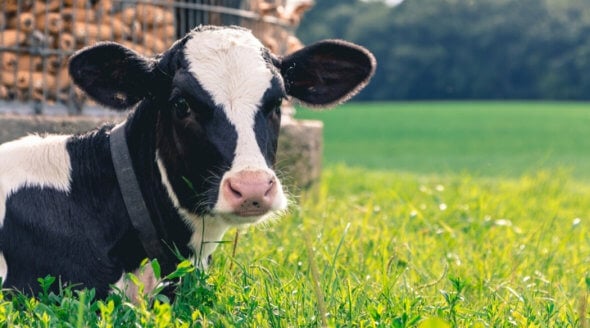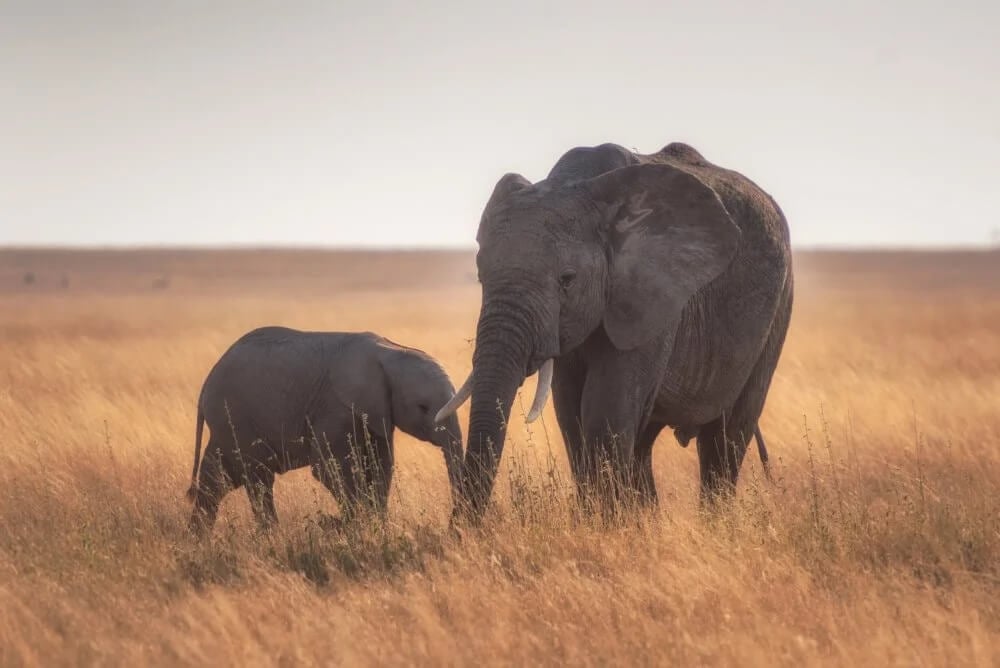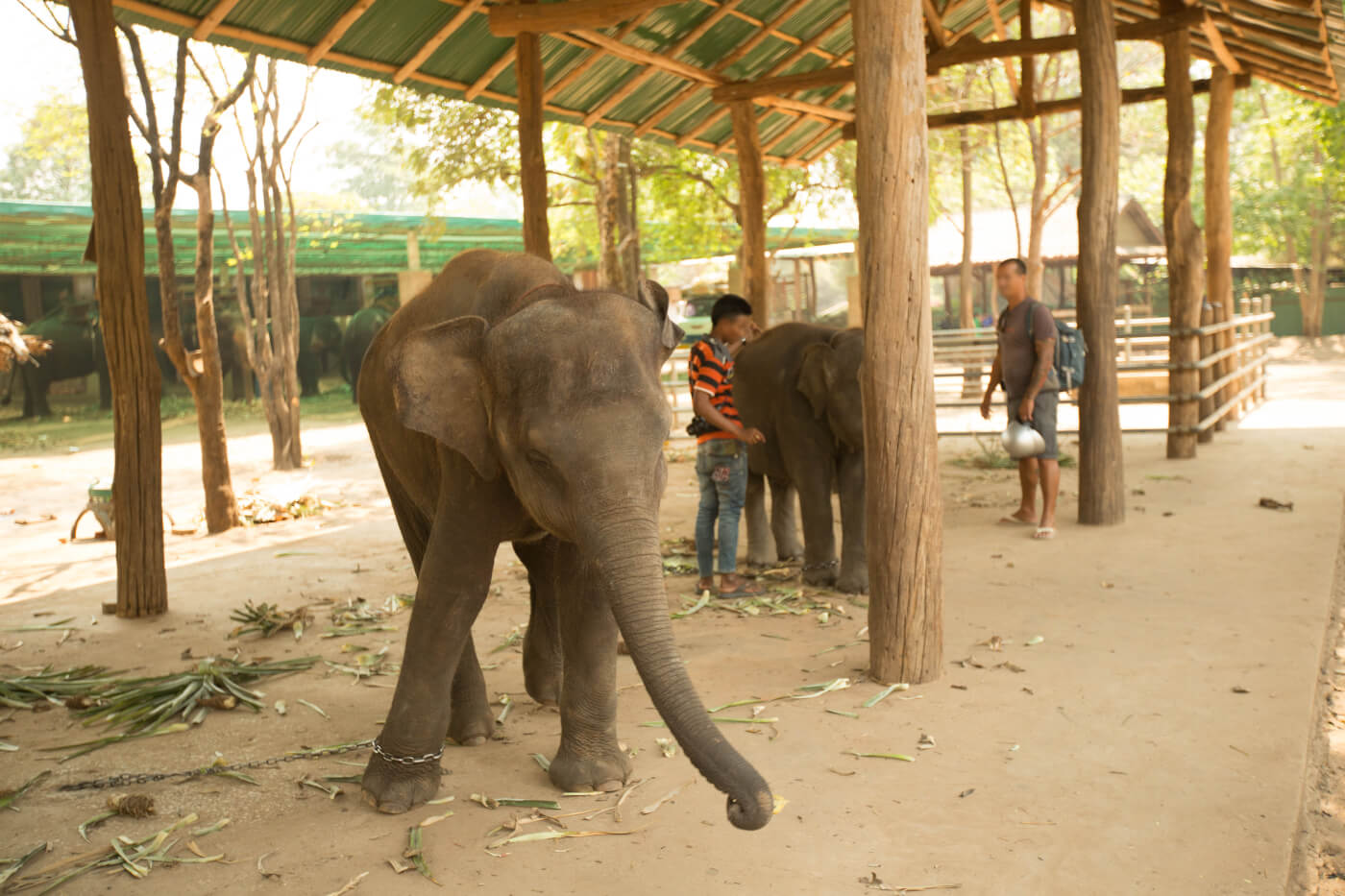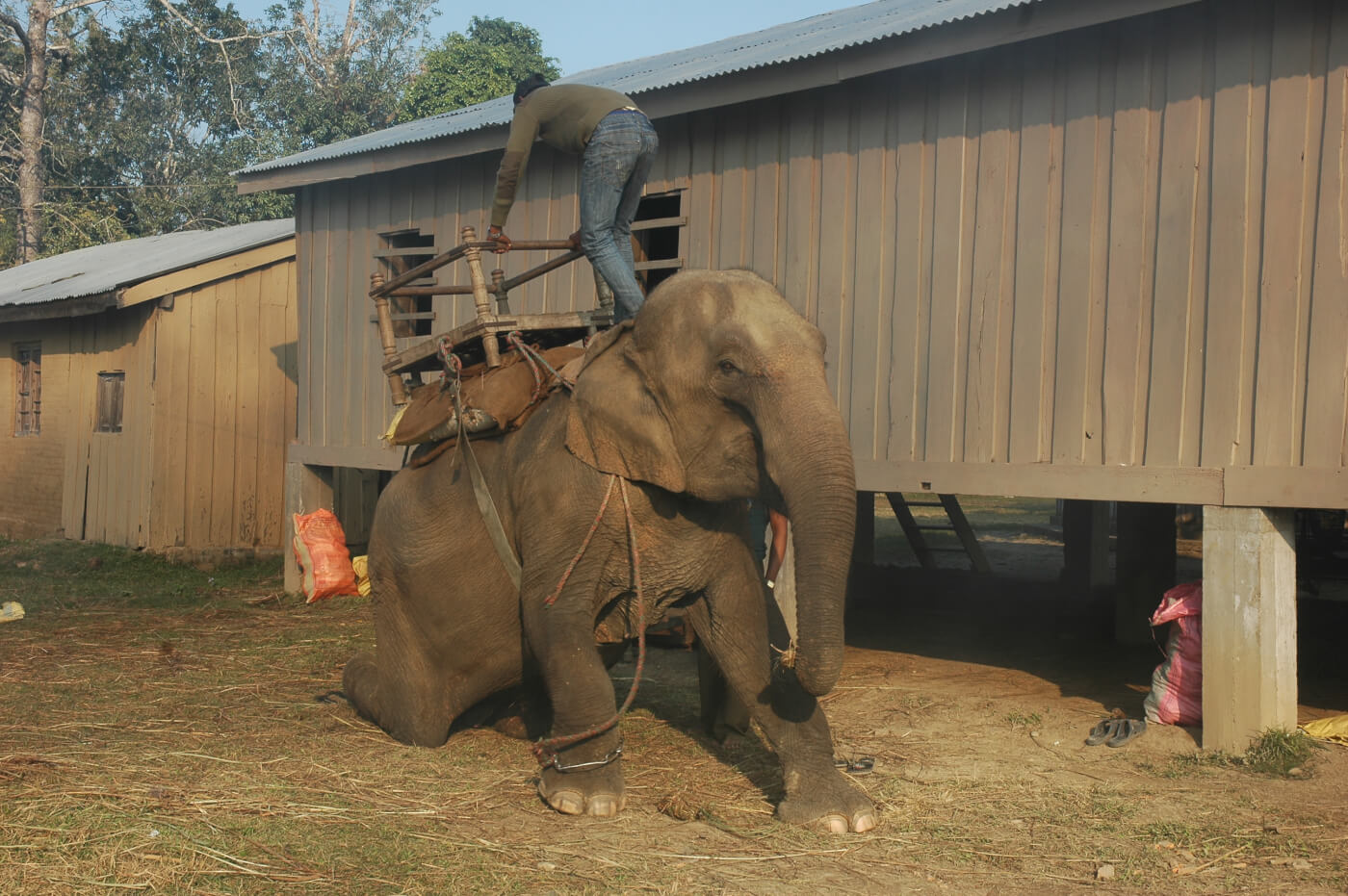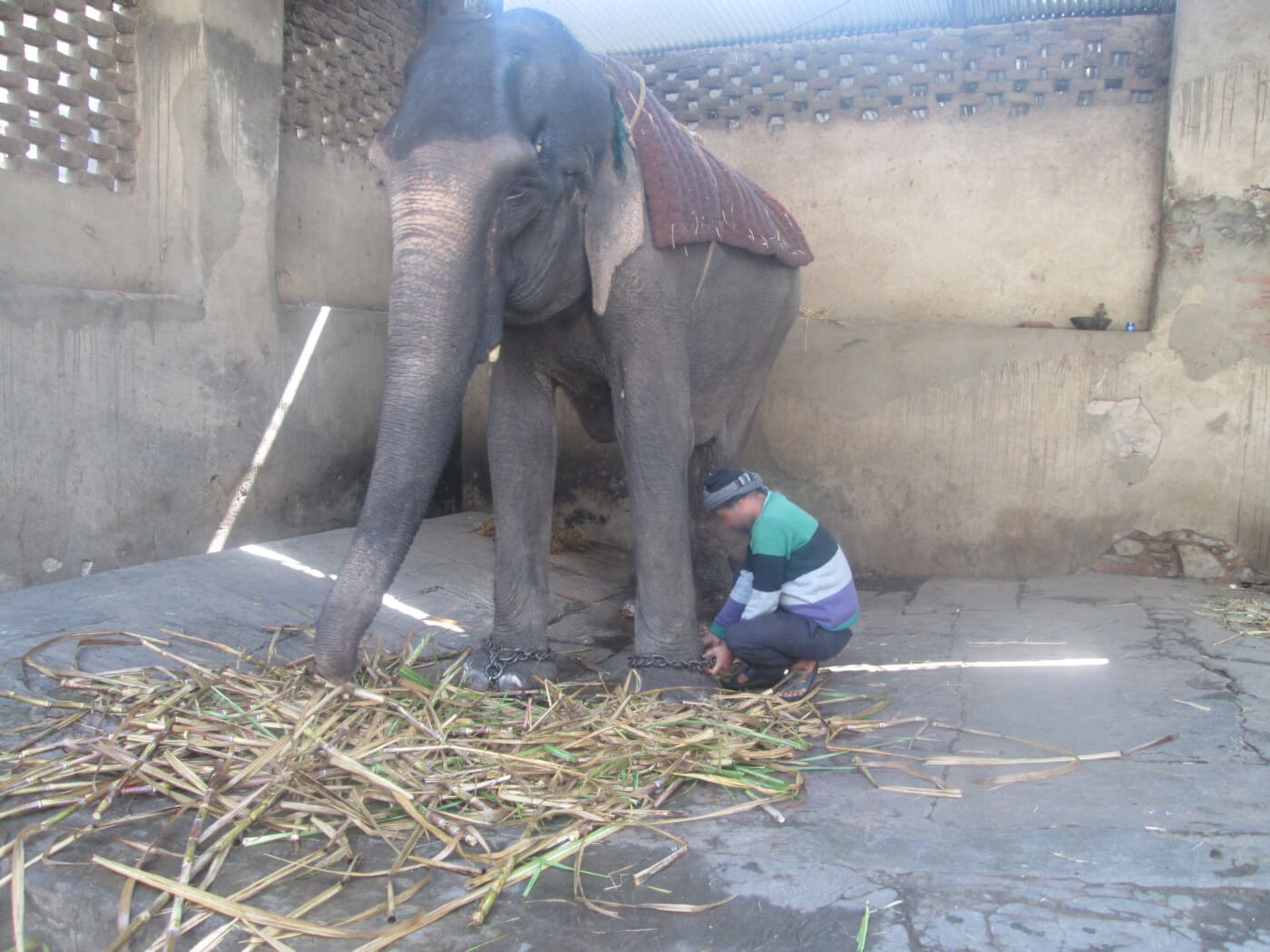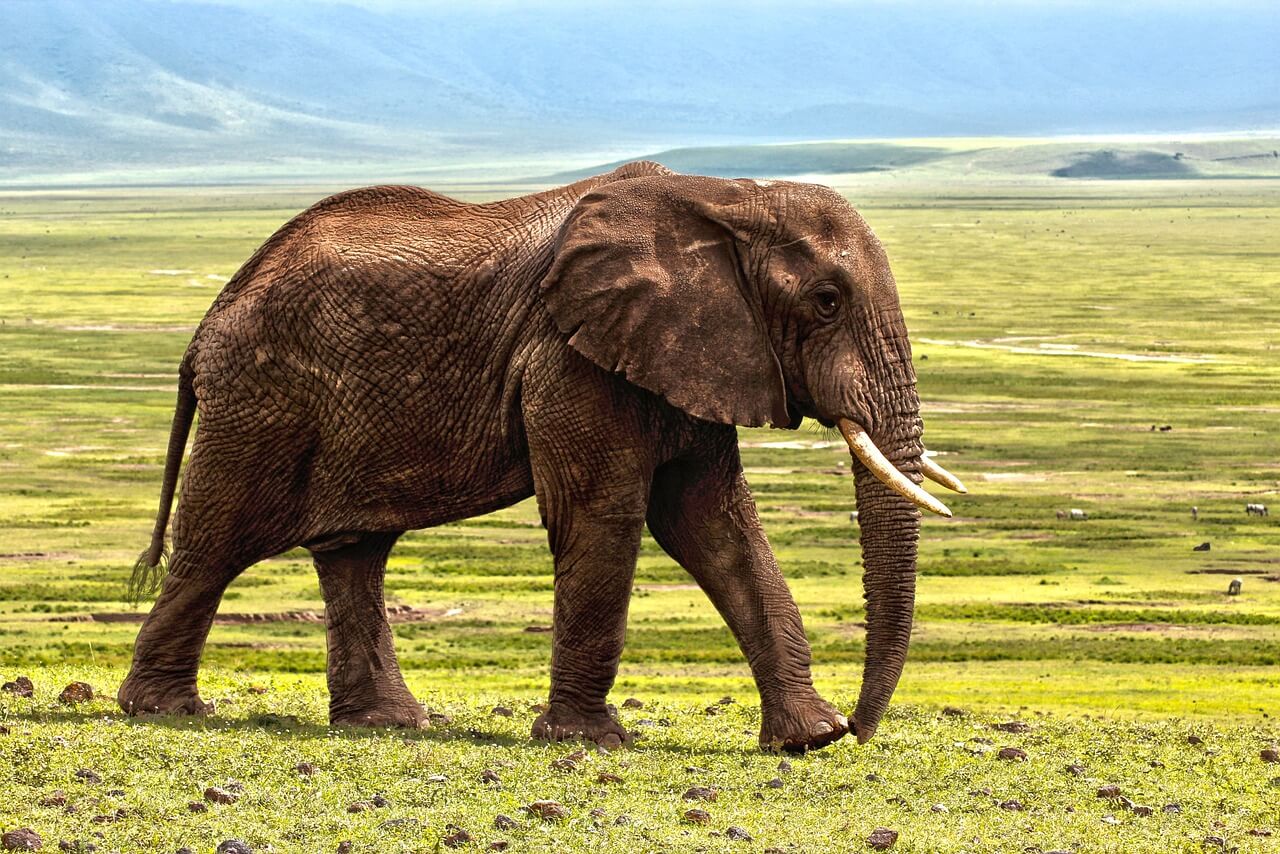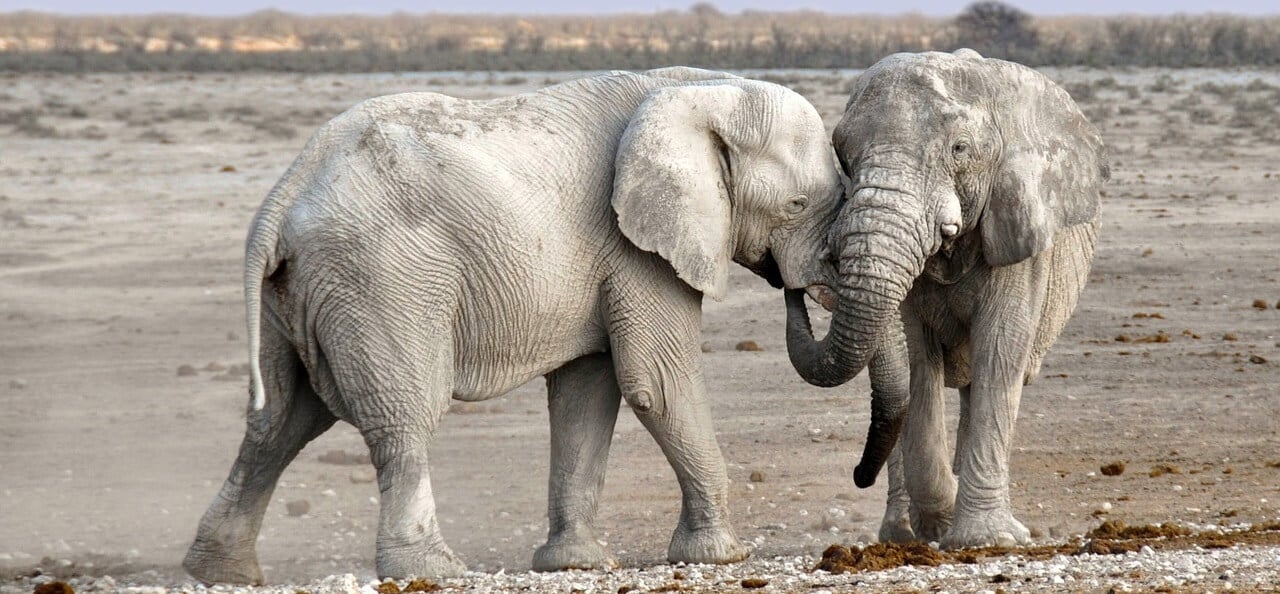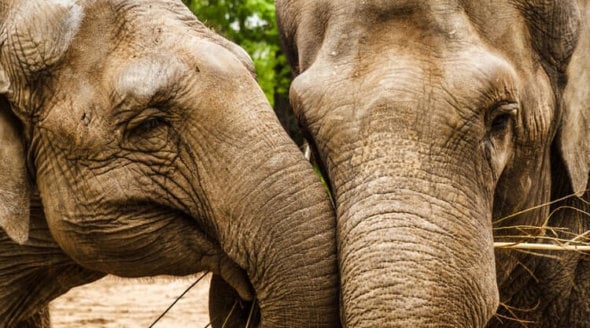Elephant Riding and Activities
Elephants are some of the world’s most awe-inspiring animals. They’re also among the most abused when forced to interact with humans or give the public rides for entertainment.
Whether born in captivity or taken from their families in nature, elephants must be psychologically broken before humans can climb onto their backs or touch them. Tourists may think they’re supporting ethical initiatives by visiting elephant “attractions” where tourists can bathe, feed, touch, and take photos with elephants. Such facilities dupe the public into believing that these activities are acceptable. We know that in their natural habitat, such interactions would not occur, and any direct-contact activities with elephants are likely the result of a life of abuse. This is the story of the elephants doomed to this grim fate:
Families Torn Apart
Elephant mothers are highly protective of their young. In their natural habitat, babies stay with their mums for years – forming a relationship described as one of the closest bonds on Earth. The babies used for rides and other attractions are denied a chance at a happy life. Greedy captors – whose goal is to break elephants’ spirits for profit – kidnap these babies from their mums.
Cruel “Training”
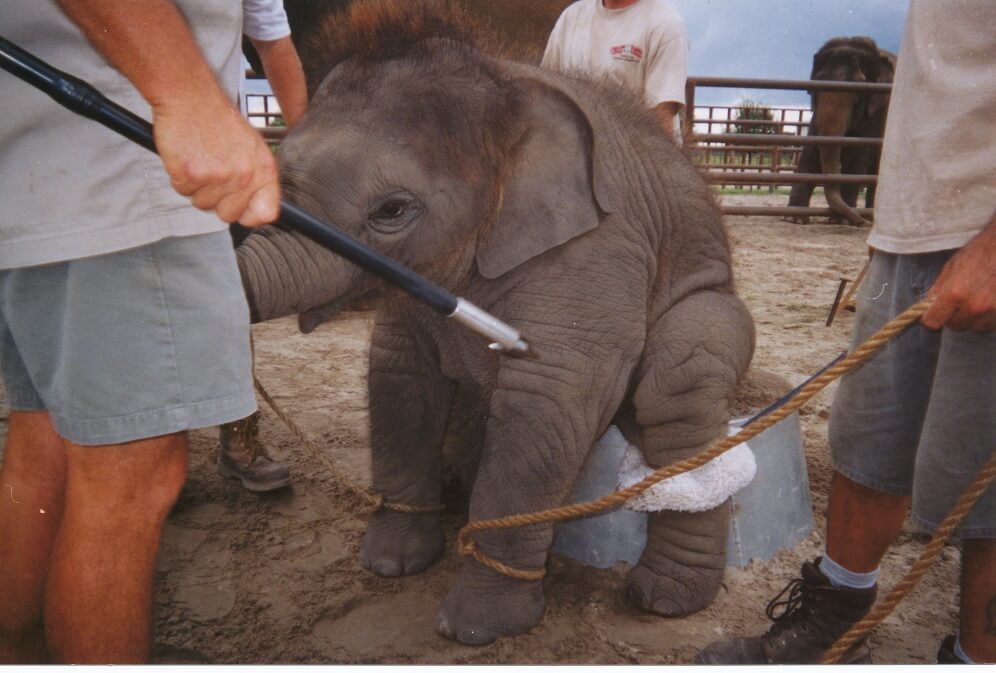
Violent conditioning begins early on. After baby elephants are torn away from their families, “trainers” tie them down and beat and scare them with bullhooks – heavy weapons with a sharp steel hook on one end – or other torture devices to break their spirits. This may go on for days or even weeks on end. This makes them fearful and teaches them to obey humans to avoid pain. A PETA India-commissioned investigation in Nepal found that calves are restrained during “training” sessions for as long as 14 hours at a time with ropes that cause painful burns. They are surrounded, startled by loud noises, prodded with sticks, and tormented with flames. Their sensitive skin is pierced, and their ears are yanked. To control them, “trainers” use restraints studded with iron nails.
Stressed and Afraid
Researchers have found that elephants who are subjected to this process often develop post-traumatic stress disorder. They can experience severe anxiety as a result of what they’ve been through, sometimes re-experiencing physical sensations of the abuse they endured.
Denied a Natural Life
In their natural homes, elephants live in matriarchal herds, forage for fresh vegetation, play, bathe in rivers, and travel many miles a day together. But in captivity, they have no control over their lives. They can’t choose to socialise with other elephants and are forced to spend long hours chained, carrying riders on their backs, or performing painful tricks – even on the hottest days. A PETA US exposé at Ayutthaya, a popular tourist site in Thailand, found that when elephants were not forced to give rides, they were chained to the ground and seen swaying from side to side, a behaviour not witnessed in their natural habitat. They spend their lives in servitude, under the constant threat of punishment, and are worked to exhaustion.
Deprived of Proper Care
Elephants in captivity endure a serious lack of exercise and spend prolonged periods standing on hard surfaces, both of which are major contributors to serious foot problems and arthritis. They’re routinely denied nutritious food, adequate water, and necessary veterinary care, especially for their feet.
Premature Deaths
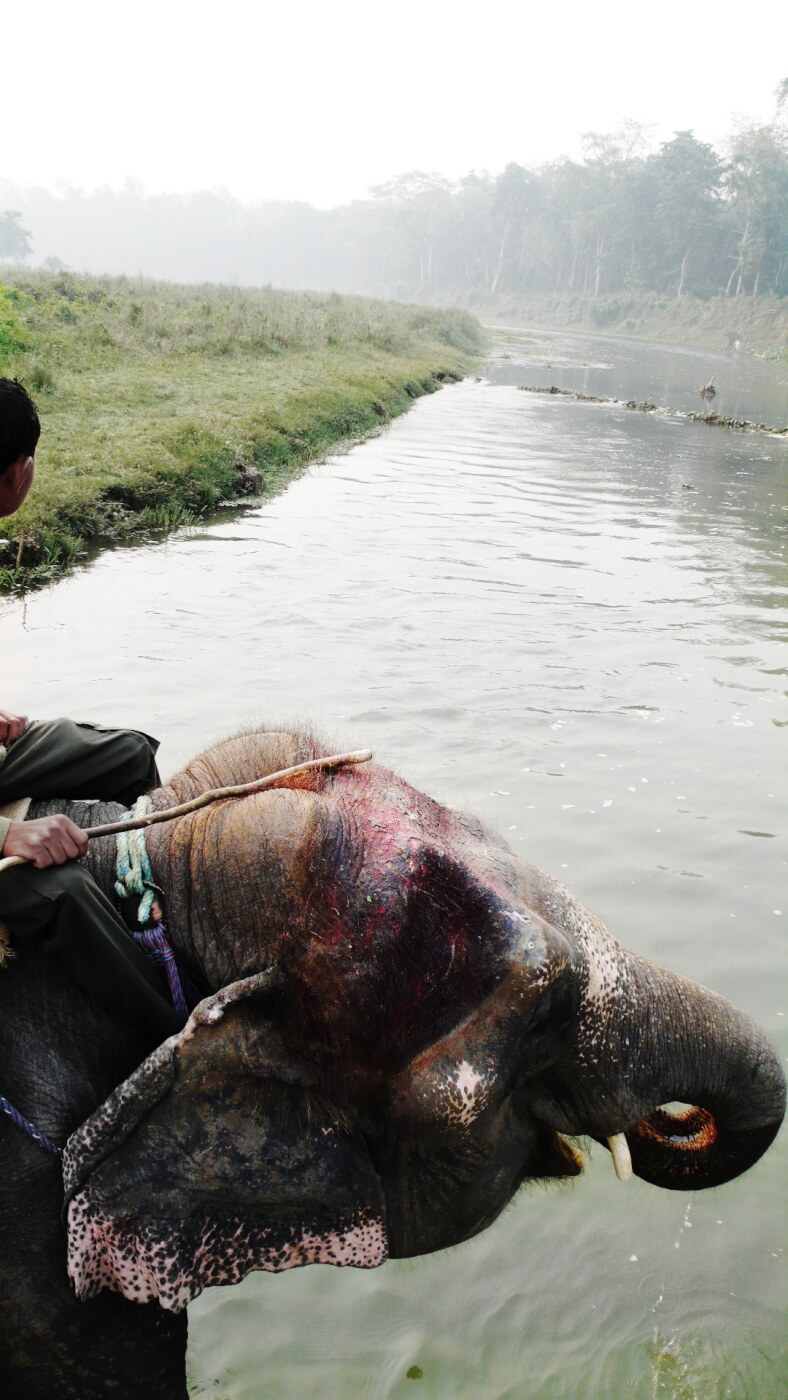
Most captive elephants die decades short of their natural life expectancies – like Sambo, an elephant forced to carry tourists in Cambodia who dropped dead after suffering a heart attack, or Dumbo, a baby elephant who died in Thailand after breaking his back legs.
Elephants Strike Back
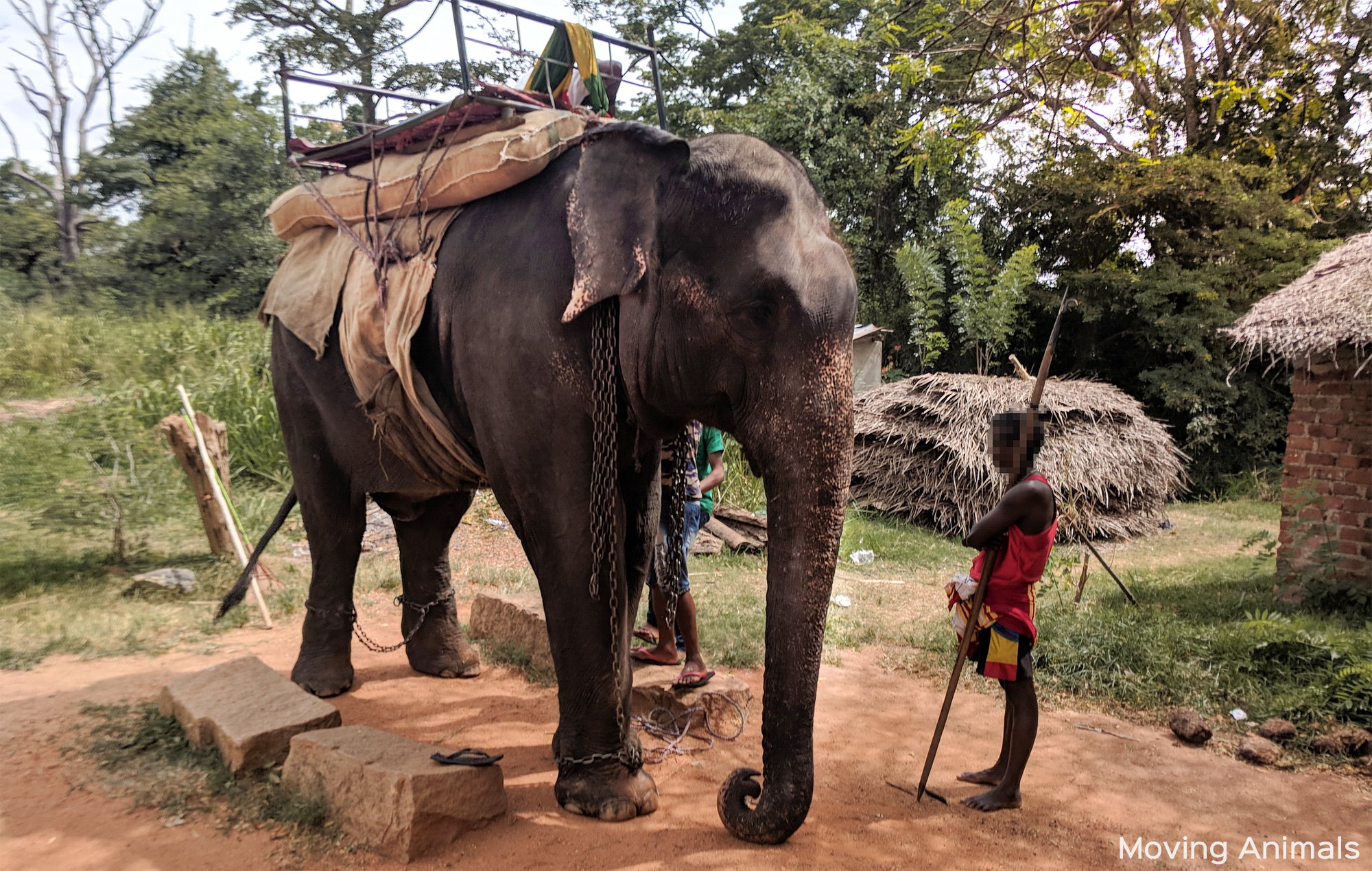
The only way to force elephants to give rides, interact with humans, paint pictures, or perform other demeaning tricks is through violence and domination. Under these vile conditions, it’s no surprise when one strikes back. In Zimbabwe in 2017, Mbanje, a captive elephant, charged and crushed his captor to death after being forced to give rides earlier in the day. In 2024, in India, an elephant named Gouri was forced to give rides to humans and subsequently attacked a tourist, grabbing her and swinging her by the trunk, slamming her to the ground, and breaking her leg. And in January 2025, an elephant became spooked by fireworks and trampled five festival-goers in Thailand.
Humans Die, Too
Risks to human health
Elephants used in tourism pose a danger to the public. Disease transmission is a serious risk. Tuberculosis – one of the deadliest diseases in the world – is transmissible between elephants and humans and has been documented in elephants throughout Asia. A study published in the International Journal of One Health assessed scientific literature relating to interactions between tourists and African and Asian elephants and found that twelve zoonotic diseases are transmissible.
One was gored by the animal’s tusk, and the other sustained a broken leg.
Sham Sanctuaries
Elephant camps throughout Cambodia, Thailand, Vietnam, and other countries are notorious for duping the public into believing that their activities benefit elephants – often by claiming to rescue the animals or offer them “sanctuary” – but the abusive “training” methods and deprivation that elephants face at these facilities are often the same as those they’d endure at more explicitly entertainment-focused businesses. Any direct-contact activities with elephants, such as riding, bathing, feeding, or photo ops, are harmful. If a sanctuary has baby elephants, they are likely to have been bred rather than genuinely rescued.
Festivals
Elephants are often forced to take part in festivals where their abuse is disguised as “tradition”. One such example is the Surin Elephant Round-up, held in Thailand. Around 300 elephants are made to perform confusing tricks such as throwing darts at balloons, playing football games and tug of war, and engaging in “mock battles” for hours on end – over multiple days. Smoke and fireworks are lit at the stadium, and the elephants are forced to perform demeaning demonstrations of their strength. The mahouts use bullhooks to control them. When not used at this festival, the elephants are exploited at other tourist attractions across Thailand for the rest of the year.
At the Chitwan Elephant Festival in Nepal, elephants are used in “games” like polo and football for human entertainment. PETA Asia’s investigation footage shows elephants gouged and struck with bullhooks leaving visible signs of abuse. Tradition is never an excuse for cruelty; many popular festivals around the world do not involve animals.
Supply and Demand
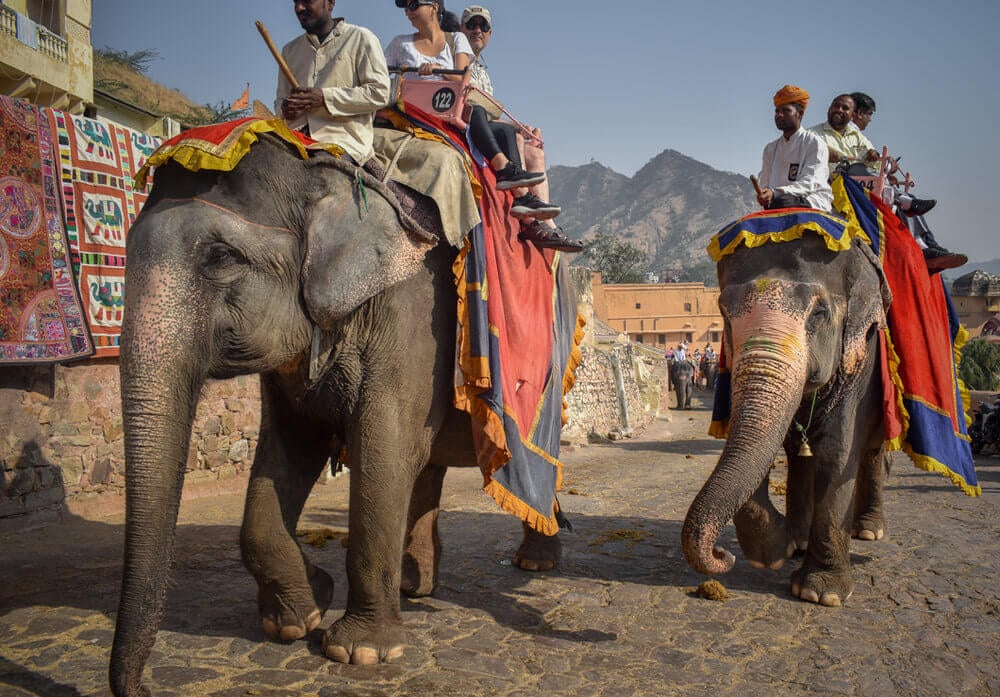
Everyone who pays to ride an elephant or books an excursion involving captive elephants is responsible for this merciless cycle of abuse. To make a real difference in the lives of these animals, we need to take action to stop their suffering.
What You Can Do for Elephants
Please never ride, take selfies with, bathe, or feed an elephant, as these activities can only occur due to cruel training. When you book a trip abroad, ask your tour operator and hotel whether they promote such activities. If they do, explain why they should stop. Only visit facilities approved by the Global Federation of Animal Sanctuaries.
All animals are living, feeling beings who would never choose to entertain the public, and they suffer when forced to do so. Please urge the Indian minister of tourism to end this exploitation of elephants:
Factbox
- In their natural habitat, elephants travel long distances and spend 12-18 hours a day eating grasses, bark, roots, leaves and stems.
- Asian elephants are endangered under the Convention on International Trade in Endangered Species of Wild Fauna and Flora (CITES).
- Capturing elephants for human “entertainment” and tourism purposes is one of the main threats to their existence, along with habitat loss and degradation, agricultural encroachment, and human-elephant conflict.
- There are around 15,000 Asian elephants held in captivity for tourism.
- By some estimates, 50% of elephants who are tortured during “training” die in the process.

